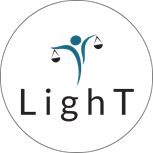Introduction
Parallel to the rapid growth of the social role of technologies based on machine learning, an increasingly extensive discourse has unfolded about the possibilities of using these tools in the public sector. Two main directions of thinking in this area crystallized: on the one hand, the examination of possible areas of application in court work, and on the other hand, in public administration. The analysis of parliamentary perspectives on artificial intelligence (AI) can be linked to the latter circle and can be evaluated as a branch of it.
AI is reshaping almost all areas of our lives, and this is no different with legal work and its countless sub-areas. This is also why in recent years there may have been a need to look for tools to promote the efficiency and transparency of parliamentary work by involving modern technology.
Primarily in Latin America and Europe, we can see working examples of successful parliamentary integration of AI. This blog post reviews European examples: from Estonia, Italy, and the European Parliament.
Estonia
In Estonia, the question of AI's parliamentary role arose in the context of a comprehensive modernization program affecting all segments of the public sector. In the Baltic country, more emphasis was placed on technological developments after democratization, when it was necessary to create a functioning public administration without practically existing traditions. Later, as a result of cyber attacks and influence attempts primarily from the Russian side, efforts to secure the digitized platforms were intensified. Today, these platforms form a fairly closed system. The fact that we are talking about a country with a small population, where the digital competencies of the citizens are generally very high, further helped the rise of new software.
Many legends have spread about Estonian technological developments, but now it seems clear that we can actually talk about a series of very well-thought-out and rational decisions.
In Estonia, there is currently no question of a fundamental rethinking of the relationship between people and technology. Instead, we can talk about the implementation of innovative ideas with the help of technological tools that make it easier and, if they prove successful, can make the work of the involved human actors easier in the future. They are currently working on a number of small and large technological developments that aim to make our lives easier within the framework of existing structures, but the goal is not to completely replace human intervention in some areas.
The key to Estonia's technological competitiveness can also be found in the fact that the source code of all software used in the public sector or currently being developed for such a purpose is publicly available. The key to Estonia's technological competitiveness can also be found in the fact that the source code of all software used in the public sector or currently being developed for such a purpose is publicly available. Developments in this direction focus on the automation and digitization of various areas of public administration, including the preparation of court hearing minutes, document anonymization, and drafting decisions to impose fines for exceeding speed limits.
It is only one aspect of this large-scale modernization program that certain results can also be applied to parliamentary relations. In the public service, applications marked with the concept of "kratt" borrowed from ancient Estonian mythology (figures roughly corresponding to the character of the elf) are used. Every single piece of software belonging to the "kratt" circle has been developed or is being developed in Estonia. The platform of any foreign company is not used, although they obviously draw on proven solutions elsewhere. In this way, it is possible to avoid the data falling into foreign hands through the software operators, and the prioritization of domestic technological developments is constantly seen as a stimulating factor for innovation. Technological developments are mainly financed by the state; the importance of private investors remains secondary.
A parliamentary application called Hans, which came to the fore after the abolition of the training of parliamentary stenographers, and which can prepare the minutes of plenary and committee meetings with the help of AI, fits into the ranks of the kratts. Human supervision is currently indispensable, although the long-term goal is to prepare automated summaries with the involvement of generative AI. The continuous training of the Hans system over many years has led to a spectacular result: the device is now able to recognize all members of parliament and members of the government, and its error rate has also been significantly reduced. In the beginning, he wrote down 40% of what was said at the meeting incorrectly, but now the human employees who provide supervision only have to overwrite 5% of what Hans recorded. Seeing the results of the parliamentary implementation, several other public administration bodies, such as the Tallinn Municipality, showed interest in using a similar application.
There is also a kratt that provides legal advice to members of parliament, as well as one that simultaneously subtitles parliamentary speeches, thereby significantly facilitating the situation of hearing-impaired citizens.
Italy
In addition to Estonia, Italy is another leading European example of the parliamentary application of AI, and both houses of the bicameral legislature are open to these tools. Both the House of Representatives and the Senate have made significant progress in three respects.
On the one hand, and perhaps this is the most significant perspective, the Italian Parliament has at its disposal the Gestore Emendimenti, which, with the involvement of AI, is able to connect similar amendment proposals, thereby influencing the parliamentary agenda and increasing its efficiency. The traditional method of the Italian opposition is to submit a large number of almost word-for-word identical amendments to the legislature, which is forced to discuss them one by one, losing considerable time. However, the new tool is capable of filtering out textual similarities and, based on this, connecting essentially identical amendment proposals. These proposals can then be decided by the parliament with a single vote or even together. Another goal is for the software to be able to recognize semantic similarities, so that in addition to literal matching, the analysis and filtering of amendment proposals could become even more effective by taking the context into account. However, for the time being, the results are subject to human supervision. The AI's proposal only becomes followable for the legislature if it is approved by a person.
The other possibility of application is related to the minutes of the parliamentary sessions: both houses of the Italian legislature have software that organizes thematically related minutes, so that the related parliamentary discourses become easier to follow.
Finally, thirdly, the chatbot applications operated by both chambers should be highlighted. These applications use generative AI to answer the frequently repeated questions of those interested in the legislative process, thereby speeding up the flow of information and reducing the workload of the parliamentary staff.
The European Parliament
The European Parliament primarily turned to AI for help in publicizing its history. A significant part of the archive was digitized by the parliamentary staff, and now involving generative AI, the Archives Unity Dashboard application was developed, which is built from the digitized elements of the European Parliament's archive, which has been expanding since 1952. The tool can provide answers to the questions of interested parties, selecting from more than 100,000 documents based on keywords. It then interprets the selected documents and formulates an understandable and concise answer based on this. In addition, the application is available in all official languages of the EU, and it can also translate documents originally mostly in French into the other 27 languages.
Conclusions
The European Artificial Intelligence Act does not list AI-based software supporting the internal functioning of parliaments among high-risk applications. It follows from this that, although the European legislation generally perceives the sources of danger affecting democracy and reflects on them, it nevertheless makes a definite distinction based on risk, leaving a relatively wide scope for developments in this direction. In general, it can be said that, while stricter restrictions apply in the field of direct democracy, in the institutional system of indirect democracy, we can count on slightly more permissive entry conditions, while maintaining an emphasis on caution when developing AI-based technologies. This demarcation can further speed up the parliamentary implementation of technological developments, which is why it is worth assessing to monitor the current situation. A similar overview could outline the latest Latin American developments from Argentina, Brazil, and Chile.
__________________________________________________________
This report was prepared with the support of the Algorithmic Constitutionalism Research Group (LP2024-20/2024), funded by the Hungarian Academy of Sciences.
__________________________________________________________
The views expressed above belong to the author and do not necessarily represent the views of the Centre for Social Sciences.




 Boldizsár Szentgáli-Tóth
Boldizsár Szentgáli-Tóth